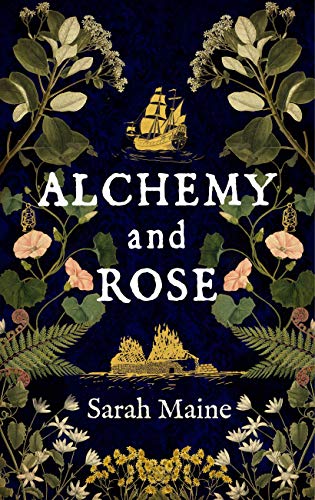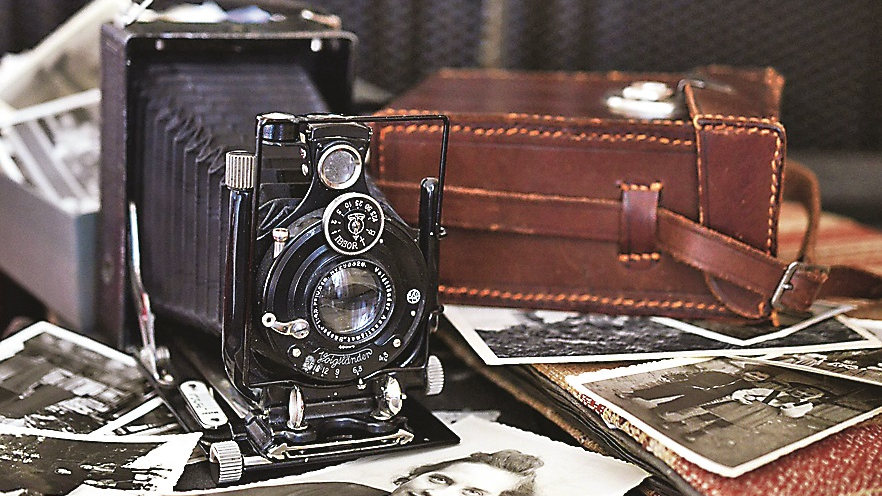Book: Alchemy and Rose
Author: Sarah Maine
Publisher: Hodder & Stoughton
Price: £20.99
In Alchemy and Rose, Sarah Maine has added one more ‘historical romance’ to her repertoire. As she states in the “Historical Note” to the novel, she prefers to hang narrative events upon historical (that are also quasi-biographical) pegs and weave a tapestry of romance — that is a quest for gold and the golden girl.
It is only apposite that the ‘golden girl’, Rose, should rise from the sea, Venus-like, on the beaches of Hokitika of New Zealand, a place where people from around the world, particularly Scotland, have assembled to discover gold.
The love story of Will and Rose transports readers across continents from New Zealand to Australia to Scotland. Evocative descriptions of the Tasman Sea, the Taramakau River in the Kumara gold fields, and other tumultuous water spaces texture this transoceanic narrative. Waves and waters unite and part in rising and falling motions. The breathtaking descriptions of a ship, anxious to cross the treacherous sand bars near the shore of the cruel Tasman Sea but splintering into pieces in the presence of a helpless assemblage on the beach, is one among the novel’s many alchemies.
Ships, whether in functional or wrecked states, naturally take centre stage. The names of the steadfast Will and the desirable Rose are also straight out of a romance. As in any romance, villains come in the shape of public-house Big Molls, voyeuristic gold diggers from Taramakau camps, and thorough bad eggs such as Robbie Malloy, impeding the union of Will and Rose. Like all good romances, this one too ends on a note of hope, if not of immediate and utter fulfilment. The coincidences that bring Rose and Will together are far too many, and too frequent to ring true. After all, this was not the age of social media and mobile phones. Yet, there are hints of an emerging techno-State even within the harsh, primitive environs of the Kumara gold mines: it is technology that helps unpack the mystery at the heart of the narrative.
The powerful presence of the ‘alchemist’, Fraser Urquhart, a Lily Briscoe-like figure, and his photographic ‘vision’ transform Rose from a poverty-stricken, bewildered child of an unmarried mother — a flotsam in a shipwreck, a moll’s doll — to a divine muse. Urquhart’s interrogative camera/ eye/presence (braving insults, threats, and the sheer incomprehension of the photographic art) freeze those tumultuous moments of gold rush adventures into eternity, just as they capture the reasons for the Scottish lads’ flight from a failing agricultural economy at home. Urquhart’s camera, seeking meaning in random events, lends self-reflexivity and a metanarrative dimension to an otherwise earnestly told plot.

Alchemy and Rose by Sarah Maine, Hodder & Stoughton, £20.99 Amazon
The relationship between Rose and Urquhart, the alchemist and his muse, remains the most exciting strain of the narrative. Rose evolves into a work of art; a body aware of its curves and crevices, of its translucence; its sheer immanence within the womb-like confines of Urquhart’s darkroom. Even as she picks up the mundane craft of developing negatives using the right chemicals as the photographer’s assistant, she discovers the beauty that light, shade, camera angles, chemicals and the human body combine to create.
Urquhart’s transformative visions of Rose are metonymic of the narrator’s art. This line of the story, if firmly held on to, would have raised Maine’s novel into something truly outstanding. Unfortunately, this metanarrative strain is explored only in fits and starts. Urquhart’s chance shot of a catastrophe in the Kinnloss estate is paired with Rose’s photographs of the tragedy’s aftermath to bring the tale to its desired ‘happy end’. Robbie Malloy’s transformation is inconclusive, as are the several coincidences in the novel. But we have called it a historical romance haven’t we?
Photographers, photographs, cameras and the nascent art of developing negatives are central to the storyline. Photographs, with a choice of backdrops in Urquhart's studios, are instruments of the Hokitika gold diggers’ self-fashionings — ‘evidence’ curated in dark rooms may ‘convince’ people back home of their current ‘prosperity’ and certify their adventures, although often desultorily mundane, as ‘heroic’. Photographs perfected in Urquhart’s studios also camouflage the miseries of a gold digger’s life in Kumara — the back- breaking work, the web of jealousy, treachery, uncertainty in which these men’s endeavours are embedded. Will’s story of loss of Rose, of sizable gold nuggets that he had acquired, and the near loss of life is one among many such. Even at the end of the novel, all is not well as Will must undertake another uncertain journey to Canada to make good. Our propensity to capture and share every moment to prove our ‘happy and prosperous state’ in today’s social network sites or the risk-taking ‘embedded photojournalist’ accompanying forces to record conflicts as adventures for television viewers had their antecedents in Urquhart and his transformative studio in Hokitika.
The portrait of an unnamed Chinese man who saves Will’s life when he gets washed away in the Taramakau River is jarring in its Orientalizing dimensions, and does nothing to broaden the readers’ horizons regarding the global dimensions of the gold rush. The Hokitika gold adventure remains a European, particularly Scottish, quest.
Alchemy and Rose is not an outstanding novel, but one that is worth reading for its occasional streaks of brilliance and insight.











